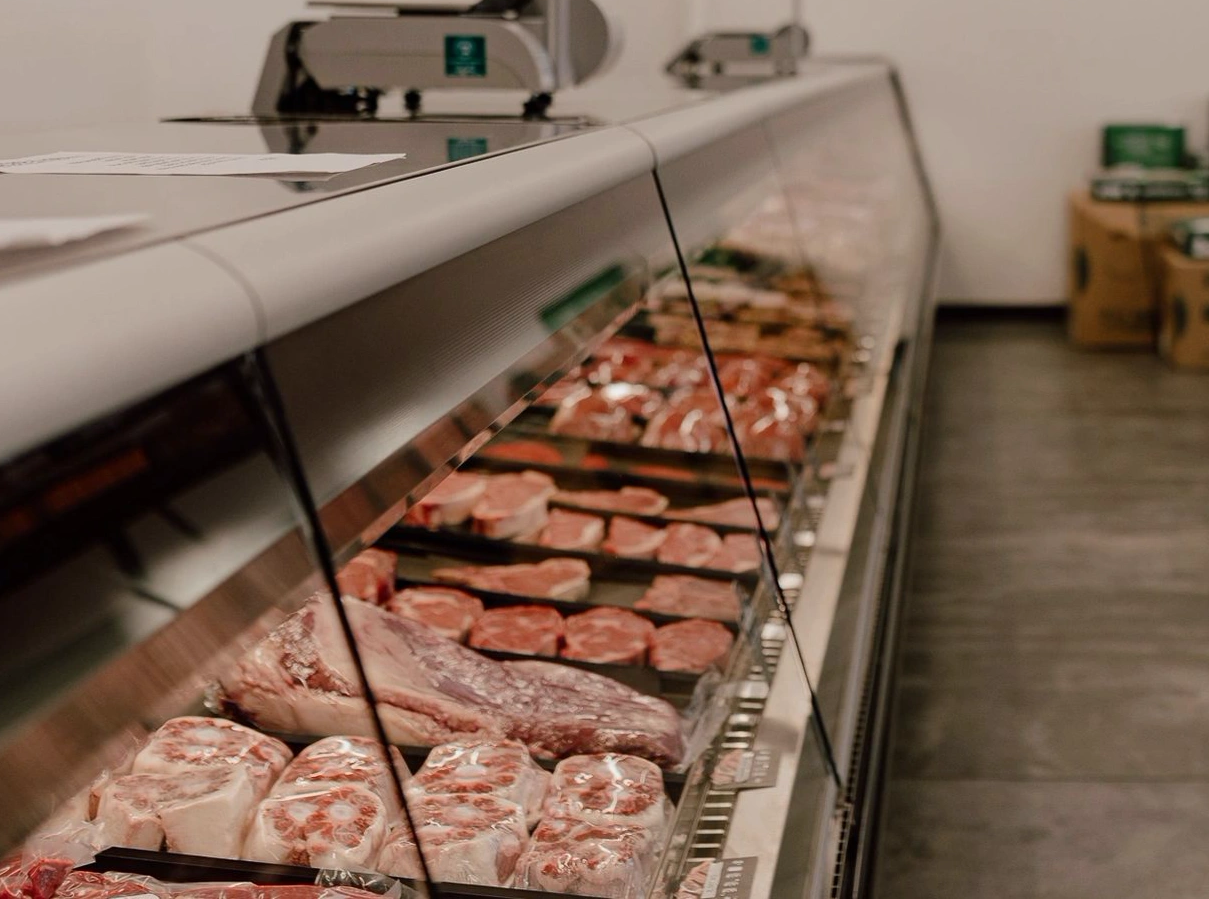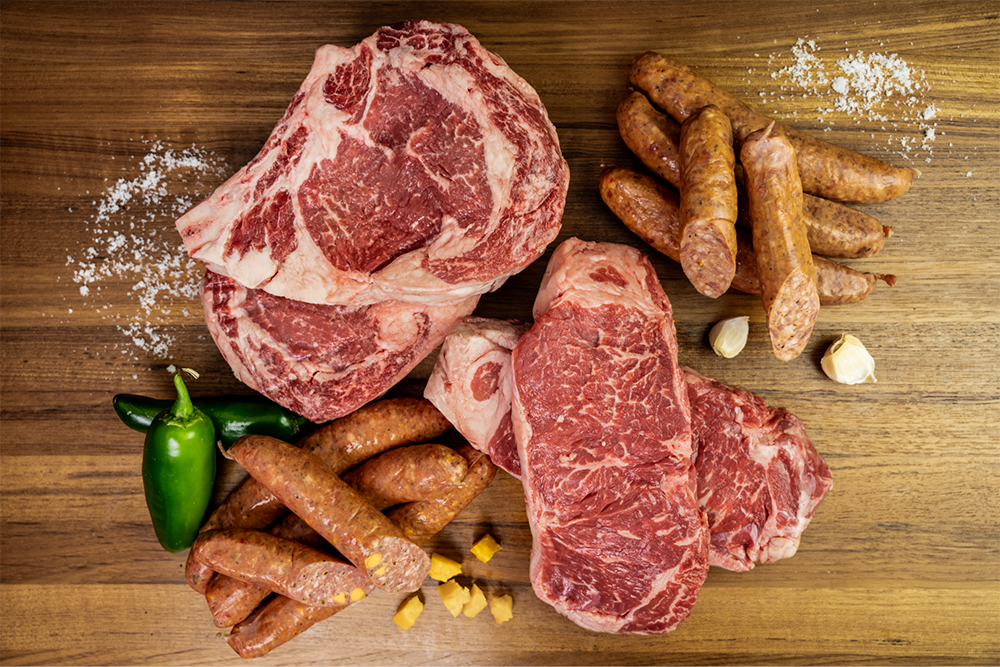Top Factors to Shop at Bagley Farms Meat Market Edwardsville IL for Costs Meats
Top Factors to Shop at Bagley Farms Meat Market Edwardsville IL for Costs Meats
Blog Article
Discover the Art of the Butcher's Cut in a Modern Meat Market
In the ever-evolving landscape of contemporary meat markets, the butcher's cut has actually transcended its typical origins, merging olden workmanship with contemporary practices. What absolutely establishes the modern-day butcher apart is their capacity to build a much deeper link in between consumers and the beginnings of their meat.
Development of Butchery Strategies
The evolution of butchery strategies shows a rich tapestry of technology and adaptation driven by improvements in technology, changes in customer demand, and a deeper understanding of meat science. Historically, butchery was a craft passed down with generations, with techniques refined over centuries to make best use of yield and taste. The industrial change ushered in mechanization, transforming typical practices and enabling large handling.
The mid-20th century saw butchery strategies additionally fine-tuned by clinical understandings into muscular tissue biology and meat aging, enhancing both inflammation and preference. Technologies like vacuum cleaner packaging and refrigeration extended item shelf-life, enabling butchers to branch out offerings and enhance quality control. This period additionally marked the increase of specialized devices, such as band saws and meat slicers, which raised precision and performance in meat handling.

The 21st century has presented electronic technology into the butchery realm. Digital systems now help in tracking pet provenance and maximizing cuts to fulfill specific client preferences. Additionally, a renewal in artisanal butchery has actually arised, blending standard abilities with modern-day knowledge to satisfy consumers seeking ethical and sustainable meat choices. This advancement highlights a dynamic interaction between practice and development, conference modern demands while protecting the craft's heritage.
Understanding Meat Cuts
Comprehending the complexities of meat cuts is crucial for both butchers and customers seeking top quality and value. Each cut comes from a different part of the animal, passing on one-of-a-kind flavors, appearances, and food preparation methods - bagley farms meat market edwardsville il. Mastery of these differences not only improves cooking experiences but additionally makes best use of the energy of each carcass. For butchers, specific cuts mirror ability and respect for the craft, making sure minimal waste and optimum return.

Recognizing muscle mass composition is important; muscular tissues utilized extra frequently by the animal often tend to be harder and are best matched for sluggish food preparation techniques, while less-used muscles, like those discovered in the loin, are much more tender and perfect for barbecuing or roasting. Knowledge with these distinctions equips consumers to make educated selections, enhancing their cooking ventures.
Choosing High Quality Meat
Selecting the best meat entails even more than just picking an aesthetically enticing item from the screen. bagley farms meat market edwardsville il. The art of picking quality meat needs a discerning eye and expertise of particular qualities that represent quality and quality. Pay attention to the color; beef needs to have a bright, cherry-red shade, while lamb ought to show a soft pink tone, and pork a pale pink. This suggests the meat is fresh and hasn't been revealed to oxygen for as well long.
Second of all, think about the marbling, which refers to the white flecks of fat within the muscle mass. Correct marbling is a vital indicator of tenderness and taste, as it melts during food preparation, enhancing the meat's juiciness. Remember, greater marbling commonly associates with premium high quality cuts, such as USDA Prime.
Texture is another important element; meat ought to really feel firm to the touch, not slimy or extremely soft. Furthermore, bear additional info in mind this post the scent. Fresh meat ought to have a clean, neutral odor, devoid of any type of sour or repulsive smells.
Pairing Cuts With Food Preparation Approaches

Alternatively, harder cuts like brisket and chuck roast are abundant in collagen, which damages down into gelatin when cooked slowly. These cuts are excellent for braising or slow roasting, permitting the meat to tenderize in time and establish deep, complicated flavors. Cuts such as short ribs and pork shoulder fare well with slow-cooking techniques, where prolonged cooking times change their durable structures right into delicious meals.
Lamb shanks and oxtail, which require extended food preparation to tenderize, are perfect prospects for cooking or sluggish simmering. These approaches coax out rich, hearty flavors while preserving moisture. By recognizing the one-of-a-kind characteristics of each cut, cooks and home cooks alike can elevate their culinary productions, ensuring each dish is both pleasing and remarkable.
The Butcher's Duty Today
Browsing the evolving landscape of the modern meat market, the butcher's function today extends past mere preparation of cuts. Contemporary butchers are culinary artisans, educators, and supporters for sustainable techniques. They link the space in between the ranch and the fork by making sure honest sourcing, comprehending pet husbandry, and focusing on openness in the supply chain. This change shows the growing consumer need for high quality over quantity, where provenance and animal well-being are vital.
Along with crafting exact cuts, butchers currently involve straight with customers, offering cooking advice and customizing options to fit individual demands and choices. Their expertise in meat aging, marbling, and flavor accounts equips consumers to make educated decisions, enhancing their culinary experiences. click this site This customized service exhibits the butcher's developing role as a trusted consultant in the cooking area.
Additionally, butchers are essential in decreasing waste, utilizing entire pets to create varied items such as sausages and stocks. This extensive technique not just respects the animal yet also aligns with contemporary sustainability objectives. This way, the contemporary butcher embodies both custom and technology, adapting to an ever-changing market while protecting the artistry and integrity of their craft.
Conclusion
Proficiency in comprehending diverse meat cuts and high quality indicators equips butchers to provide enlightened recommendations, straightening details cuts with optimal cooking methods. By honoring historic practices while welcoming contemporary needs, the butcher's duty continues to be essential in today's sophisticated meat market.
Report this page